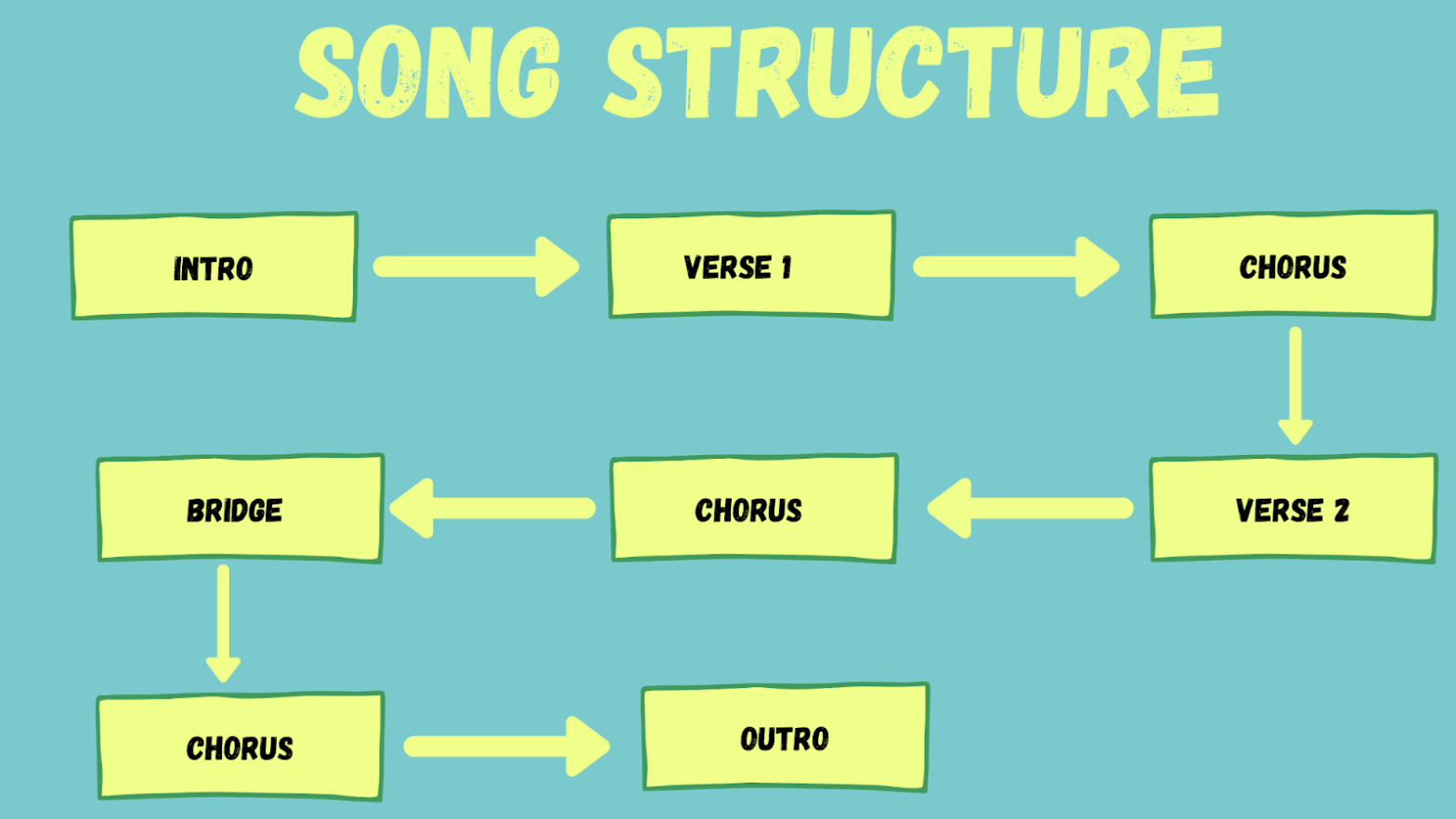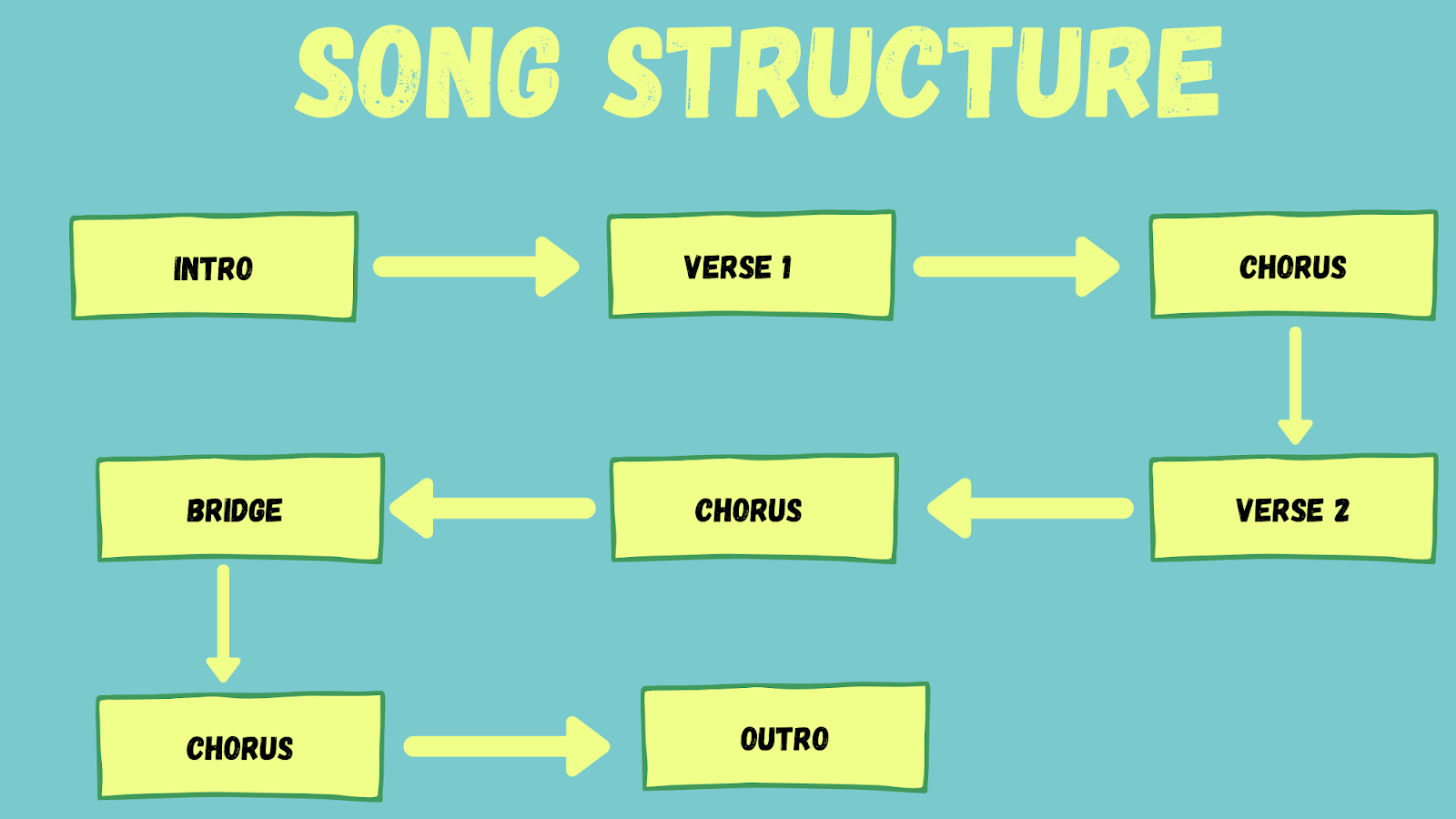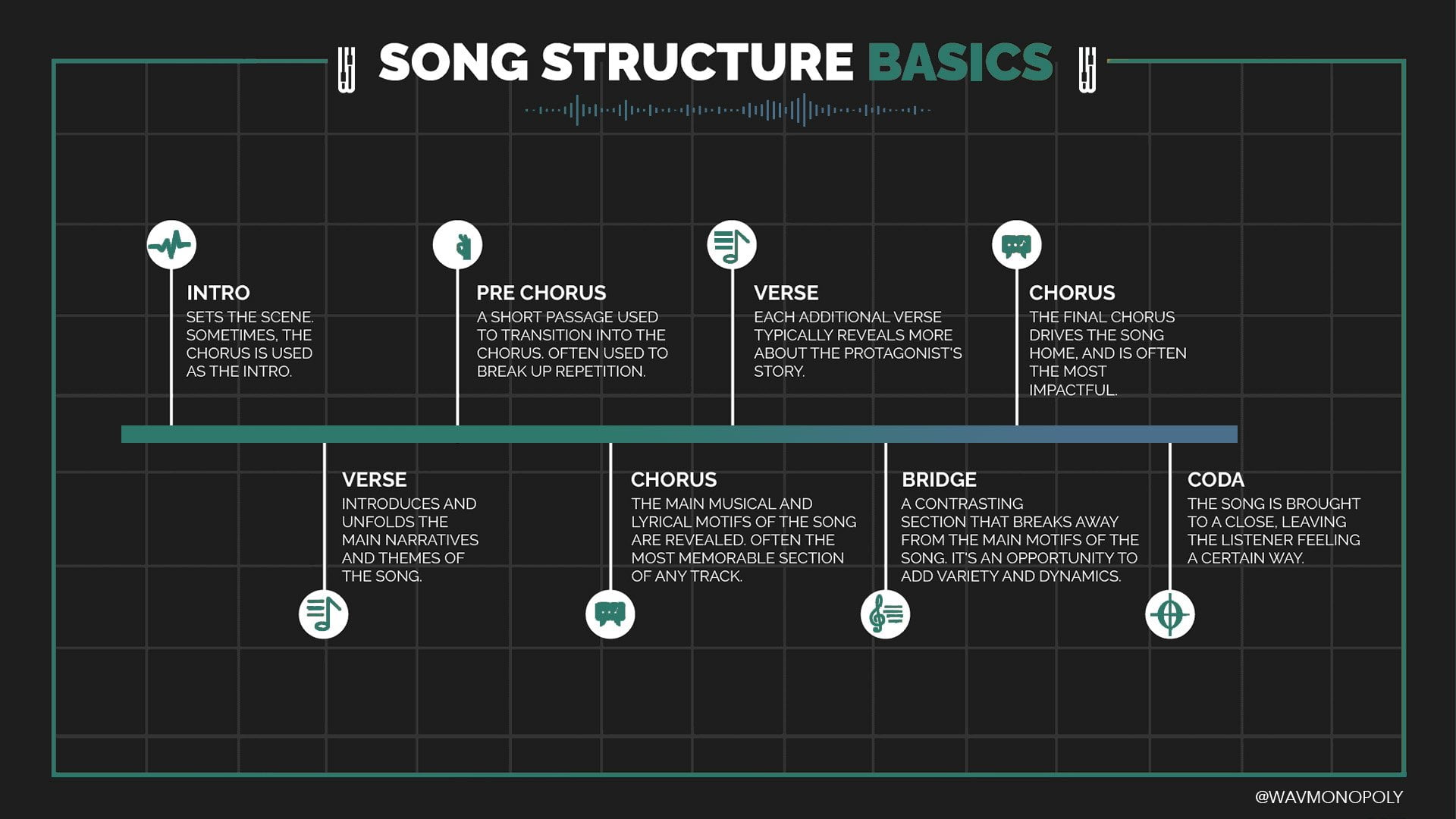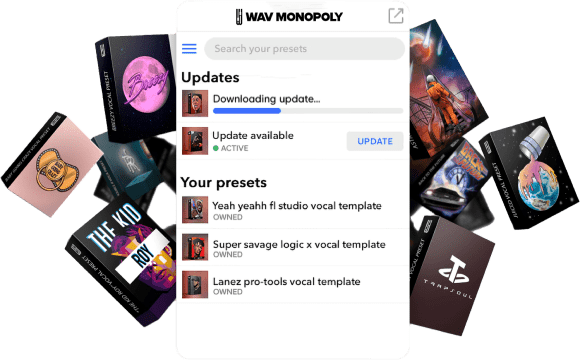LEARN MUSIC AND AUDIO PRODUCTION | Wavmonopoly TIPS AND TRICKS
Song Structure: Formula To Make You a Better Musician

wavmonopoly June 1, 2022

“One good thing about music, when it hits you, you feel no pain.”
-Bob Marley
Music is created to inspire us, drive us, and make us feel emotion. No matter your mood, when your song comes on the radio, you can’t help but start grooving or singing along. Music can bring hope or uplift our spirits. One of the ways music does this is through the song structure. Within each song, you can find the spectrum of human emotions. Some songs make us dance and shake in a sweaty frenzy, while other songs can move us to shed a tear.
Songs are arranged to invoke our feelings. Those songs play in our memory over and over again. Our lives can be defined by the playlists of our souls.
As humans, we recognize patterns through our five senses, the way your grandma’s hand feels, the smile on your love, the smell of your puppy’s breath, and the songs that played during your middle school dance.
The rhythms and lyrics remain in our memories because our minds recognize the patterns in music. This is achieved through common song structures.
What is Song Structure?
A song combines rhythms, melodies, lyrics, and harmonies that interact, inform and overlay to form music. The music is dictated by the song’s structure. A song’s structure is a combination and repetition of progressions.
Common Song Structure works much like poetry. In a song, you might have an introduction, verse – chorus – verse -chorus – verse. Much like a poem would go ABABAB.

There are all types of common song structures. And much of what determines a song’s structure is the genre of music being played. Though song structures may overlap, each new genre of music created unique song structures.
In some cases, bands and musicians test the limit of song structures in an effort to break the rules. This can create exciting music. But be forewarned playing loose with structures can cause listening fatigue. Some good examples of musicians skipping a song structure include the Grateful Dead, Mars Volta, Frank Zappa, and free-form jazz. Which all experiment with free-form song structures.
On the other hand, hit songs follow a song structure that is familiar to most listeners. Song structure formulas have been ingrained into our listening conscience since the invention of music. So sit back and enjoy this article on song structures and afterward, get to work on some music!
The Parts of a Song and How They Fit Together.
Introduction (Intro)
Every song needs to start somewhere. That starting point is called the introduction of a song. It marks the beginning of a song’s structure, and like all good beginnings, it needs to catch the listener’s attention. There are many approaches to introductions, but it is crucial to keep in mind that a song should build up and create an emotional peak. The last thing you want to do is start a song at its crescendo with that in mind. Build up slow and take the listener on a journey.
Verse
Music calls to its listeners and takes them on a ride of emotions. This is where the verse comes in. The verse is the vehicle in which the stories of the song are told. The better the lyrics and melodies that empower the lyrics, the more likely the listener will remember the song. I’m sure we have all participated in some form of karaoke or sing-along. We remember those songs because the verse was so good that it formed a memory. Unlike the chorus and pre-chorus, which use the same lyrics over and over again, the purpose of the verse is to tell the story. Think about the verse in terms of film or narrative.
After every chorus break, the narrative of the story you are telling in a song should build on itself. The first verse presents the ideas of the songs, followed by the second verse, which builds on the tension. While the final verse builds the crescendo and creates the turn in the listener. By changing the meaning of the second or third verse, you can create complexity and depth to your song’s structure. Hip-Hop has many great examples of storytelling through verse. Check out Slick Rick, Snoop Dogg, and Eminem for some great examples of storytelling through verse.
Pre-Chorus
Not every song has a pre-chorus, but the pre-chorus helps transition between the verse and the chorus. To set up a pre-chorus in a song, you can use chord progressions from the verse and combine them with the progressions of the chorus. This is sometimes called the prep chord. The pre-chorus gives you the chance to set up the chorus. Don’t be afraid to experiment here, as the pre-chorus is a great way to change the pattern of a song’s structure and give the listener something to hang on to. You can utilize a pre-chorus if your verses are too short and you need a fill between the chorus and verse.
Chorus
Comes from the Greek word khoros and describes the choir and singers in religious festivals and theater. The chorus would be sung throughout a play to keep the viewers mind occupied and as a method to link ideas in the play. The chorus often summarizes the idea of a song. Many recording artists use the chorus as the song’s title because the chorus is most often remembered in a song. In many ways, the chorus releases tension in a song. The chorus is built up by the intro, verse, and pre-chorus. The human mind remembers things that come in threes. That’s why most fairy tales have three little pigs, three blind mice, and so on. You’ll find that choruses often come in three sections for this very reason.
Refrain
The refrain in a song is used in place of a chorus. A chorus includes a repetition of lyrics indicated by a chord change. A refrain repeats the lyrics, but the chord progression does not change. Refrains are often used to keep the energy of a song up by refraining from a chord progression. You can hear refrains used by punk bands like Ramones.
Hook
The Hook was made famous by Hip-Hop songs. Like the refrain and chorus, the hook is repeated throughout the song. The difference between the hook and the refrain/chorus is that hook can appear in various song parts regardless of chord progressions or song structures. The hook is often used as a chorus, background vocals, and lyrics.
Bridge
The bridge is that part of the song that changes the song’s feel, builds the final chorus up, or introduces the solo. Bridges usually come somewhere between the second and third chorus. The bridge serves many purposes, including setting up the listener for the end, bringing in a lead solo, giving the listener time to reflect on the song’s verses, and of course, setting up that last chorus in which the singer can really dig into their vocals.
Solo
The solo was made famous by Jazz, Blues, and Rock musicians. During a solo, the accompanying instruments will lower in volume so that one instrument stands out. The rhythm section will hold the beat down until the lead instrument plays. Most song structures will use the solo to bridge a verse and a chorus. Solo’s are often found before the final chorus or at the song’s end.
Breakdown
The breakdown was made famous by James Brown and other Funk pioneers. Essentially a song breaks down, meaning that each instrument stops playing until you are left with one instrument playing for several bars. The instruments will then return to the song creating a buildup and crescendo within the context of a song. Unlike a solo, the breakdown aims to halt the song to emphasize the crescendo.
Outro
The outro marks the end of the song. Usually, the outro is some type of reworking of the intro. The outro indicates to the listener that the song is ending. Some song structures use the outro to bookend the song, meaning the intro and outro are the same.
Common Songwriting Structures in Popular Music
One of the reasons popular music sounds the same is because popular music follows the same song structures. If it ain’t broke, don’t fix it. These songwriting formulas have been applied countless times over thousands of records. From the Beatles to Beyoncé, you can hear these songwriting structures in every song that hits the top of the billboards.
AABA Form (32 bar)
This is the songwriting structure that started it all. In the early twentieth century, music recording and distribution road the wave of the Industrial Revolution. For the first time in history, people had access to a radio. Through those first scratchy airwaves came this popular song structure. It consists of two A sections that are eight bars each. (A bar is a measurement of music, with a specific number of beats played at a specific tempo.) The B section contains a contrasting harmony and a final return to the A section. This songwriting formula was popular in the early Doo-Wop era of the forties, fifties, and sixties. This structure lends itself to cruis’n Lowrider Style.
An example of an AABA song structure is “Yesterday” by the Beatles, written and performed by Paul McCarney.
Verse Chorus Form (VCVCVC)
If AABA form was the sound of the forties and fifties, the sixties brought in a new song structure formula. The verse-chorus form dominated airwaves when Rock’n Roll became the dominant popular music. In this song structure, the verse and chorus go back and forth. The chorus plays a major role in the song, as the song’s chord progressions change between the verse and the chorus.
Verse Chorus Verse Chorus Bridge Chorus (VCVCBC)
This song structure is the next logical step in songwriting. Much like the verse-chorus form, the VCVCBC song structure plays off the changes between the verse and chorus, but it adds a bridge before the last chorus. The bridge gives the recording artist the ability to add a solo or a change for dramatic effect. Many Rock songs of the eighties and nineties followed this song structure as it gave guitar rock gods the chance to solo.
No Chorus (VVBV)
The Beatles “We Can Work it Out) is a perfect example of this song structure. In the No Chorus song structure, the song is stringed together in a series of verses, with the chorus being replaced by a refrain (a line or a few lines that repeat). Furthermore, there is no chorus because the song’s chord progression does not change during the refrain. This is also a popular songwriting structure of punk rock bands, as punk rock powers through an entire song with limited chord progressions.
No Bridge (All Verse)
Historically this song structure has had limited use as it only plays a repeating progression and has no changes. But It was popularized by the minimalist movement and often for fast punk style songs that last less than two minutes. So one of the reasons why this songwriting structure is rarely used is because the listener can easily grow tired of the song’s repetitive progression. However, a recent emergence in this songwriting style has emerged. With bands like the White Stripes, a newfound appreciation for fast in-your-face songs with high energy emerged. By eliminating the chorus and the bridge, you trim the fat off a song, and the song runs on pure octane. But be warned, that song will burn out fast. Other practitioners of this song structure include Hobo Johnson, whose songs are all verse.
Using Songwriting Structures in Your Music
Now that you have familiarized yourself with the most popular songwriting structures, how will you use them? You can try them all to help you develop your style. Then once you have a grasp of how a song’s structure works, you will be able to recognize it when listening to your favorite music. Think about new ways to structure a song and the type of emotion and energy the structure produces. The point is to create. You’ll find that you gravitate to certain songwriting structures. So go forth and create!
